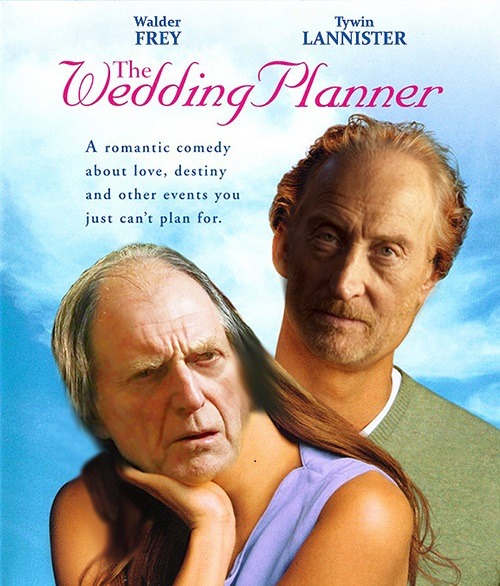There is a prevailing wisdom in the fiction writing world that says one should never introduce a new POV late in a story, especially if they do not have a prevailing impact on the plot. Usually, all the POV characters need to be introduced as early as possible, usually in the first act of a story. For films, this is pretty essential. There simply isn’t enough time for a new character, much less a new character with a distinct POV, to show up and get our attention when dealing with a medium that sticks to around 2 hours for the entire tale. In books, the rule can be finagled about, if you’ve got the chops, but instances where an author is successful when introducing a new POV after a story’s midpoint are more exceptions than rules. But in television, it can be a very different story.
Now, to be clear, I’m not talking about where a known sidekick gets their own episode to play around with. I’m talking about when completely new characters usurp an episode, showing us the same events and/or world, without benefit of a recurring character taking any control of the story. And, in most cases, you never see those new characters after the episode ends.
There are a few examples of this that have really stuck with me. The one that comes most readily to mind is an episode of Babylon 5 (yes, I know, I’m totally dating myself here). In “A View from the Gallery”, we get a day in the life of two of the station’s maintenance workers. For most of the episode, the pair are only tangentially affected by the crisis that would have (and in varying forms has) been the basis of any other episode. We get glimpses of what would normally be center stage, mostly through overheard conversations and the like. Star Trek – The Next Generation had a similar episode called “Lower Decks” where we follow 4 ensigns as they buck for promotion. While one of the characters had been introduced in a barely-there minor role in an earlier season, the experience of seeing through her and her fellow’s eyes as they vie for prominence aboard the Enterprise, created a completely different experience than any episode before or after.
If we want to look in the 21st century, Dr. Who has done this a number of times. There was “Love and Monsters”, where a group of witnesses to the Doctor’s antics create a support group called LINDA that is taken over by an alien. In fan favorite “Blink”, we follow Sally Sparrow as she, and the rest of us, get sucked into the first appearance of the uber creepy Weeping Angels, who can only move when you’re not looking at them.
Part of why I think this works for television has to do specifically with the type of show. All three shows are highly episodic. While there were overriding plot lines that traveled over multiple episodes, these shows were created in the pre-novel-adaptation era, where the soap opera aspect of carrying one storyline over an entire season, or multiple seasons, was almost non-existent. Additionally, in the first two examples, both episodes took place in the show’s last season, where the episodic format was so deeply ingrained that any deviation made us sit up and pay more attention. In Dr. Who’s case, while the show continues on well past these particular episodes, the show has been on and off the air for over 50 years, so if you’re unclear about how things work by now, you’re not watching enough Dr. Who. In any case, when the structure of how a tale is told is so set, looking at that structure from a different viewpoint gave these stories something new and refreshing. And, as it’s only one episode in a weekly television show, it doesn’t really distract from the overall experience, especially in this day and age of binging your favorite show over a weekend…or two. These little side tales manage to keep the show going while giving us a break from the same old thing we get every other week.
Another big pro to one-off characters is how much they open the world up from the small cadre who seem to always be in the middle of everything. Suddenly, the events that might as well have only happened to five or six people, now have far wider repercussions. Additionally the propensity of placing powerful or special people at the center of the story, makes these one-off POV characters stand out, as they are usually run-of-the-mill everyman characters. You’re much closer to putting the audience in the story with a character who isn’t at the top of the chain of command or a Time Lord.
Lastly, and most importantly, I think, the one-off POV characters that work the best do so because the episodes in which they live are more about the characters than the crises happening around them. Sure, “Love and Monsters” has an alien killing of the members of LINDA, but the true focus is the love story between two of the group’s members. The alien attack in “A View from the Gallery” is more setting than plot for the two guys just going about their day. Sure, these characters are here and gone again, but we get a very solid understanding of who they are and empathize with them for the short time they are there. And while they may not have a prevailing impact on how the story of the main characters who we follow on a weekly basis ends up, the best ones usually make an impact that can stick with us long after they’re gone.


 After the movie, we started talking about the parts we liked most; my teenage girls really enjoyed Captain America holding Bucky’s helicopter so he couldn’t take off and my tween son thought Ant-man going giant was pretty awesome. But then my college-daughter expressed how Iron Man had the right of it. Captain America should have just signed the accords. I disagreed. They were too stringent and would get the Avengers caught up in too much red tape. We argued all the way home and it only escalated. Ridiculous, right? And yet, this movie evoked thought, emotion, and real-world comparisons. Which is one of the reasons that I will call Civil War great art.
After the movie, we started talking about the parts we liked most; my teenage girls really enjoyed Captain America holding Bucky’s helicopter so he couldn’t take off and my tween son thought Ant-man going giant was pretty awesome. But then my college-daughter expressed how Iron Man had the right of it. Captain America should have just signed the accords. I disagreed. They were too stringent and would get the Avengers caught up in too much red tape. We argued all the way home and it only escalated. Ridiculous, right? And yet, this movie evoked thought, emotion, and real-world comparisons. Which is one of the reasons that I will call Civil War great art.

 Fast forward to season three. I’d been enjoying a fantastic season so far, updating my husband as it went along. He had read the books years ago, and I knew he had read at least the first two or three. The first time he had thrown one of the books across the room, he had just read Eddard Stark’s beheading.
Fast forward to season three. I’d been enjoying a fantastic season so far, updating my husband as it went along. He had read the books years ago, and I knew he had read at least the first two or three. The first time he had thrown one of the books across the room, he had just read Eddard Stark’s beheading. For days after, my mind reeled with possibilities, replaying the scene in my mind. I felt horrified, shocked, and so very sad.
For days after, my mind reeled with possibilities, replaying the scene in my mind. I felt horrified, shocked, and so very sad.
